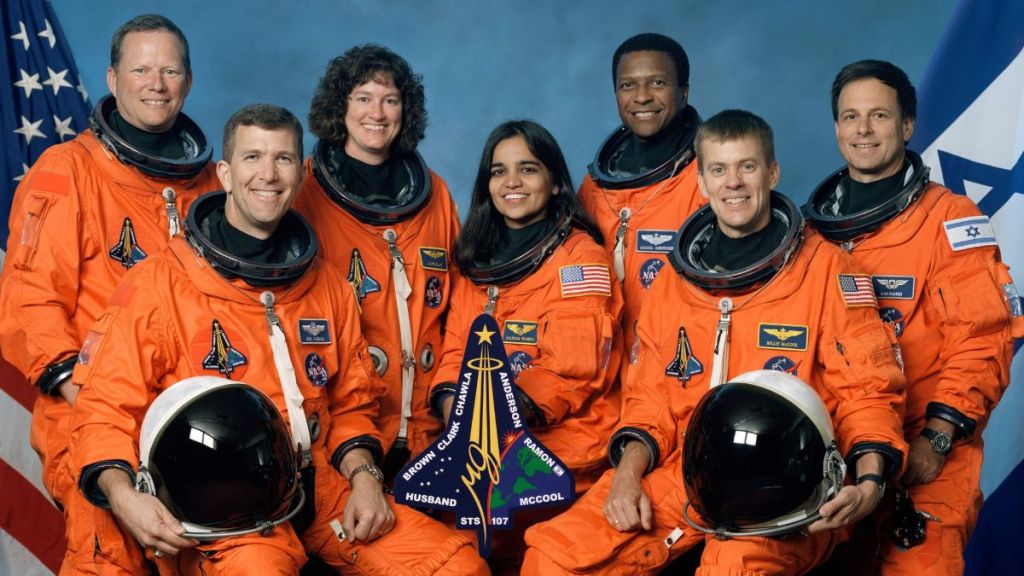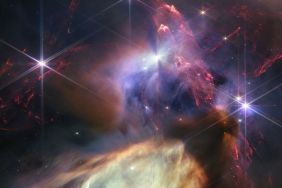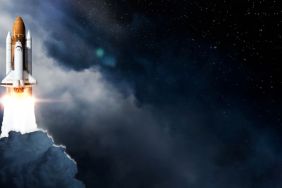Space Shuttle Columbia was a Space Shuttle orbiter that tragically disintegrated while returning to Earth and ended the lives of all astronauts aboard. Recently, CNN aired a fascinating four-part documentary showcasing the vessel’s final hours. Titled Space Shuttle Columbia: The Final Flight, this project premiered on April 7, 2024.
As a part of the Columbia STS-107 mission, the shuttle took flight on January 16, 2003. According to NASA’s official website, this science mission aimed to conduct microgravity experiments. The mission was scheduled to conclude in 17 days. However, little did the astronauts involved know that their endeavour would end in disaster. On February 1, 2003, after reentering the atmosphere, the vessel catastrophically began breaking into pieces.
Reports suggest that the incident occurred because of a breach during lift-off. The shuttle’s external tank had foam in it, which fell and struck the reinforced carbon panels. Just 15 minutes before the touchdown, the accident ended up killing all seven crew members.
The aforementioned CNN documentary features fresh interviews with relatives of the deceased astronauts and NASA officials. Furthermore, there are also interactions with the individuals who ultimately figured out why the mission failed. According to Rotten Tomatoes, the synopsis of Space Shuttle Columbia: The Final Flight reads, “The story of Columbia’s final mission is told in dramatic detail, beginning months before the troubled launch, unfolding across the sixteen days in orbit, and concluding with the investigation into the tragic loss of the seven astronauts’ lives.”
Who were the astronauts who died in the Space Shuttle Columbia Disaster?
The Columbia STS-107 crew involved seven gifted astronauts. Their commander was Rick D. Husband and the pilot was William C. McCool. Their three mission specialists involved David M. Brown, Kalpana Chawla, and Laurel B. Clark. In addition, Ilan Ramon and Michael P. Anderson were their payload specialist and payload commander respectively.
Rick D. Husband – Commander
At the time of his passing, Rick D. Husband was 45 years old. He served as a U.S. Air Force colonel and was an experienced astronaut. In 1980, he received a bachelor of science in mechanical engineering from Texas Tech University. 10 years later, he earned a master of science in mechanical engineering from California State University-Fresno.
According to NASA’s official website, Rick D. Husband was looking over the whole Columbia STS-107 mission. Reports suggest that he guided the shuttle which played a huge role in experiments involving the Sun and Earth. Furthermore, he was the senior member of the Red Team. Some of the experiments he was involved in are:
- European Research In Space and Terrestrial Osteoporosis (ERISTO)
- Mediterranean Israeli Dust Experiment (MEIDEX)
- Osteoporosis Experiment in Orbit (OSTEO)
- the Physiology and Biochemistry Team (PhAB4) suite of experiments, which included Calcium Kinetics, Latent Virus Shedding, Protein Turnover, and Renal Stone Risk
- Shuttle Ozone Limb Sounding Experiment (SOLSE-2)
NASA selected Rick in December 1994. In 1999, he became the pilot of STS-96 in 1999 – a 10-day mission. In this mission, STS-96 managed to dock with the International Space Station for the first time. Before his passing, he spent more than 235 hours in space.
William C. McCool – Pilot
The 41-year-old McCool was a commander in the U.S. Navy. He received his Bachelor of Science in Applied Science from the U.S. Naval Academy in 1983 and a Master of Science in Computer Science from the University of Maryland in 1985. Furthermore, he received a master of science in aeronautical engineering from the U.S. Naval Postgraduate School in 1992. William C. McCool was reportedly a part of the Blue Team and Columbia STS-107 mission was his first endeavour. These are the experiments he worked on:
- European Space Agency (ESA)
- Advanced Respiratory Monitoring System (ARMS)
- ESA Biopack (eight experiments)
- Mediterranean Israeli Dust Experiment (MEIDEX)
- The Physiology and Biochemistry Team (PhAB4) suite of experiments, which included Calcium Kinetics, Latent Virus Shedding, Protein Turnover, and Renal Stone Risk.
David Brown – Mission Specialist
David M. Brown, who was 46 years old, was a U.S. Navy captain, a naval aviator, and a flight surgeon. In 1978, Brown received a bachelor of science in biology from the College of William and Mary and a doctorate in medicine from Eastern Virginia Medical School in 1982. Like William C. McCool, he too was a part of the Blue Team and was on his first outer space mission. The experiments he worked on were:
- European Space Agency Advanced Respiratory Monitoring System (ARMS)
- Combustion Module (CM-2), which included the Laminar Soot Processes (LSP)
- Water Mist Fire Suppression (MIST)
- Structures of Flame Balls at Low Lewis-number (SOFBALL) experiments
- Mediterranean Israeli Dust Experiment (MEIDEX)
- the Physiology and Biochemistry Team (PhAB4) suite of experiments, which included Calcium Kinetics, Latent Virus Shedding, Protein Turnover and Renal Stone Risk.
Kalpana Chawla – Mission Specialist
The 41-year-old Kalpana Chawla was a skilled aerospace engineer and an FAA Certified Flight Instructor. In 1982, she graduated from Punjab Engineering College, India, with a bachelor of science in aeronautical engineering. Subsequently, she received a master of science in aerospace engineering from the University of Texas-Arlington in 1984. Furthermore, in 1988, she got a doctorate in aerospace engineering from the University of Colorado-Boulder. Like CDR Rick Husband, she was on the Red Team.
These are the experiments she was involved in:
- Astroculture (AST)
- Advanced Protein Crystal Facility (APCF)
- Commercial Protein Crystal Growth (CPCG_PCF)
- Biotechnology Demonstration System (BDS)
- ESA Biopack (eight experiments)
- Combustion Module (CM-2), which included the Laminar Soot Processes (LSP), Water Mist Fire Suppression (MIST)
- Structures of Flame Balls at Low Lewisnumber (SOFBALL) experiments
- Mechanics of Granular Materials (MGM)
- Vapor Compression Distillation Flight Experiment (VCD FE)
- The Zeolite Crystal Growth Furnace (ZCG)
Laurel Blair Salton Clark – Mission Specialist
41-year-old Laurel Blair Salton Clark was a commander (captain-select) in the U.S. Navy and a naval flight surgeon. As a part of the Red Team, STS-107 was her first spaceflight. She took part in experiments such as:
- European Space Agency (ESA) Advanced Respiratory Monitoring System (ARMS)
- Astroculture (AST-1 and 2)
- Biotechnology Demonstration System (BDS)
- ESA Biopack (eight experiments)
- Application of Physical & Biological Techniques to Study the Gravisensing and Response System of Plants: Magnetic Field Apparatus (Biotube-MFA) and more.
Michael P. Anderson – Payload Commander
Michael P. Anderson was 43 years old at the time of his passing. He was a lieutenant colonel in the U.S. Air Force and was a former instructor pilot and tactical officer. Furthermore, he was an expert in outer space missions. As a member of the Blue Team, the experiments he worked on were:
- European Space Agency Advanced Respiratory Monitoring System (ARMS)
- Combustion Module (CM-2), which included the Laminar Soot Processes (LSP)
- Water Mist Fire Suppression (MIST) and Structures of Flame Balls at Low Lewis-number (SOFBALL) experiments
- Mediterranean Israeli Dust Experiment (MEIDEX) and more.
Ilan Ramon – Payload Specialist
Israeli Air Force, fighter pilot Ilan Ramon was 48 years old. A graduate with a bachelor of science in electronics and computer engineering from the University of Tel Aviv, Israel, Ramon belonged to the Red Team. Some experiments he was involved in STS-107 mission were:
- European Space Agency Advanced Respiratory Monitoring System (ARMS)
- Astroculture (AST-1 and 2)
- Biological Research in Canister – Development of Gravity Sensitive Plant Cells in Microgravity (BRIC)
- Combustion Module (CM-2), which included the Laminar Soot Processes (LSP)
- Water Mist Fire Suppression (MIST) and Structures of Flame Balls at Low Lewis-number (SOFBALL) experiments and more.
According to NASA’s official website, Ilan Ramon began training at the NASA Johnson Space Center in Houston in July 1998. Just like some of his crew mates, his first mission ended up being his final mission.










